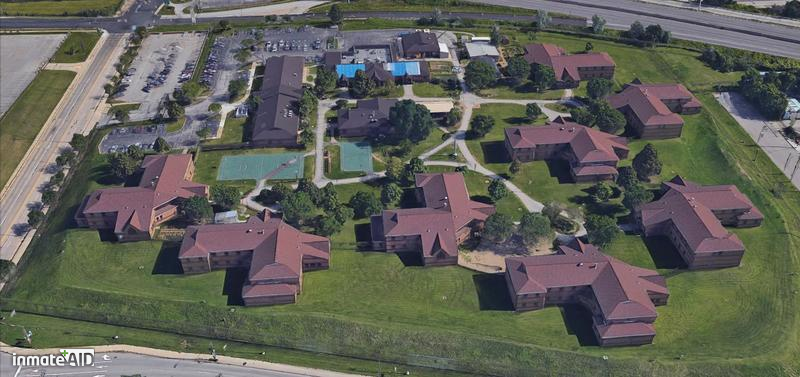Thank you for trying AMP!
You got lucky! We have no ad to show to you!
Connect with an Inmate
ODRC - Northeast Reintegration Center (NERC)
State Prison
NERC is for State Prison offenders sentenced anywhere from one year to life by the State Court in the county where the charges were filed
All prisons and jails have Security or Custody levels depending on the inmate’s classification, sentence, and criminal history. Please review the rules and regulations for State - minimum facility.
The phone carrier is Global Tel Link (GTL) - ConnectNetwork, to see their rates and best-calling plans for your inmate to call you.
If you are unsure of your inmate's location, you can search and locate your inmate by typing in their last name, first name or first initial, and/or the offender ID number to get their accurate information immediately Registered Offenders
You can support your loved ones at NERC on InmateAid, if you have any immediate questions contact the facility directly at 216-771-6460.
Located at 2675 E 30th St in Cleveland, OH, NERC carefully assigns inmates based on their custody level, considering factors like criminal history. NERC offers diverse educational and vocational programs aimed at equipping offenders for successful reintegration into society and reducing recidivism. Through these initiatives, inmates gain skills and confidence, fostering personal growth and resilience.
When someone you care about ends up in a state prison, it can be tough to navigate the ins and outs of the system. From figuring out how to stay in touch to understanding what you can do to make their time easier, it can feel overwhelming. That's where this webpage comes in handy. It's here to help you get the lowdown on ODRC - Northeast Reintegration Center (NERC) so you can stay connected and support your loved one during their time inside.
Communication is important, the prison offers a phone program for outbound calls only, with inmates unable to receive incoming calls. Accepting collect calls can be expensive, sometimes exceeding $10 per call. Click here for discounts on inmate calls, especially if the communication with your inmate is frequent. It's important to remember that all phone calls are recorded, and discussing sensitive legal matters over these lines is discouraged.
While incarcerated, reading is often the best use of time. Please note that books and magazines, puzzles, and word searches ordered for inmates must come directly from the publisher. This policy ensures that the items are new, untampered, and comply with the facility's regulations. Prisons and jails enforce this rule to prevent the introduction of contraband or prohibited materials. By restricting orders to publishers, the facility can better maintain security and control over the content entering the institution. Any books or magazines not received directly from the publisher will be rejected and not delivered to the inmate. You may, however, send letters and selfies to inmates with this easy-to-use app, packages starting at only $8.00.
NRC is a minimum-security prison housing around 605 female inmates, exceeding its designed capacity of 350. Despite the higher occupancy, NRC maintains its reputation as one of Ohio's safest facilities within the Department of Rehabilitation and Corrections. The core objective of NRC is to facilitate the successful transition of female inmates back into society by offering extensive rehabilitation programs.
Inmates at NRC are required to participate in a range of rehabilitation initiatives, including academic courses, mental health treatment, and vocational training. For those without diplomas, adult basic education classes and opportunities to earn a GED are available. Vocational courses encompass horticulture and administrative technologies, providing inmates with practical skills for employment upon release.
A distinctive aspect of NRC is its array of unique programs tailored to address various needs and challenges faced by inmates. These programs cover diverse areas such as anger management (Cage Your Rage), financial literacy (Money Smarts), trauma therapy (Mosaic), and military preparation, emphasizing discipline and leadership skills. Additionally, the Faith-Based Reintegration Program offers spiritual, emotional, and family-centered support to inmates, facilitated by NRC staff and local religious volunteers.
Other notable programs at NRC include Responsible Family Life Skills, Victims Awareness, and Moving On, each addressing specific aspects of personal development and rehabilitation. These initiatives aim to enhance self-awareness, communication skills, and understanding of the impact of crime on victims. Roots of Success focuses on environmental literacy and job readiness, preparing inmates for employment opportunities in the green economy.
In terms of offender programs, NRC collaborates with various community services and organizations to provide opportunities for inmates to engage in meaningful activities. These include partnerships with universities, animal shelters, daycares, and rescue programs, allowing inmates to contribute positively to society while incarcerated.
Overall, Northeast Reintegration Center prioritizes a holistic approach to rehabilitation, recognizing the multifaceted needs of female inmates as they prepare for reintegration into society. Through a combination of education, vocational training, unique programs, and community engagement, NRC endeavors to empower inmates with the skills and resources necessary for successful reentry into the community.









